- Sustainability
- Environment
-
Air Conservation
- Mid- to Long-Term Targets and Results
- Environmental Policy and Management
- Climate Change
- Air Conservation
- Water Resources
- Resource Circulation
- Chemical Substances
- Biodiversity
Air Conservation
| Suzuki Environmental Vision 2050 | Milestone 2030 | |
|---|---|---|
| Air conservation | Minimize air-polluting substances emitted from business activities and products by 2050 | By 2030:
|
Basic Concept
Suzuki has been promoting air conservation initiatives, including the introduction of low-emission vehicles suited to each country’s situation. As our main markets are in emerging countries such as India and Southeast Asian countries, we would like to make a larger contribution. For example, by promoting activities to generate and procure electricity derived from renewable energy sources on our own, we will not only reduce global CO2 emissions but also contribute to the conservation of the atmospheric environment in the regions in which we operate. In addition, we will introduce powertrains that are suited to the energy and infrastructure situations of each sales country and region from the perspective of product life cycles, as well as strive to reduce VOCs from production and other processes.
Efforts in Product Use
LCA (Life Cycle Assessment) *1method based calculation of product air pollution emissions
Suzuki conducts LCA not only on CO2 but on other air-polluting substances as well.
For the current Solio (Mild Hybrid vehicle), we have been able to reduce NOx, SOx and PM throughout its lifecycle compared to the previous model.
Suzuki will also continue its initiatives to reduce such substances other than CO2.
*1 Life Cycle Assessment. A method of evaluating a product as a whole by calculating its potential environmental impact at each stage of its life cycle, from raw material processing to disposal. Evaluation results are displayed as an index to confirm the relative environmental improvement effect.
Results of the Solio implementation
Ratio assuming NOx emissions of the previous Solio model (Mild Hybrid vehicle) as 100%
A: Previous model equipped with Mild Hybrid (Launched in December 2020)
B: Current model equipped with Mild Hybrid (Launched in January 2025)

Design and development efforts
Efforts in reducing emission gas
(Automobiles) Reducing exhaust gas emissions
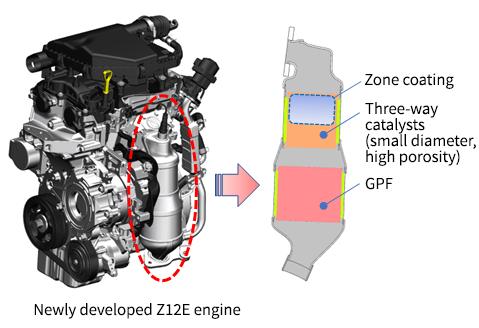
As part of our multi-pathway initiatives, we are focusing on improving engine combustion technology and exhaust gas purification performance, which will contribute to reducing environmental impacts and the use of precious metals in catalysts.
The new Swift, released in 2024, is equipped with the newly developed Z12E engine. The Z12E has achieved world-class high-speed combustion through improvements to the engine itself. By combining this with a highly efficient catalyst and GPF (soot collection filter), we have achieved clean exhaust gas performance while maintaining output performance.
(Motorcycles) Reducing exhaust gas emissions

New DR-Z4S
We are advancing efforts to further reduce exhaust gas emissions by complying with the Euro5 standards and the 2020 domestic emission gas regulations.
The new DR-Z4S and DR-Z4SM have, among other components, optimized the intake ports, combustion chamber shape, dual spark, cam profile, and two-stage catalyst, to comply with the latest exhaust gas regulations.
(Outboard motors) Reducing exhaust gas emissions
Suzuki’s four-stroke outboard motors satisfy the 2008 emission gas regulation values set by the California Air Resources Board (CARB), the secondary regulation values set by the U.S. Environmental Protection Agency (EPA), and the 2011 marine engine emission voluntary regulation values (secondary regulation) set by the Japan Marine Industry Association.
Efforts to reduce chemical substances
Reducing VOCs (Volatile Organic Compounds)*1 in cabins

Jimny NOMADE interior VOC measurement
In order to provide safe and secure products to customers, we are making efforts to reduce cabin VOCs by using materials, bonding agents, etc. that emit less VOCs for automobile interior parts. We have achieved the Japan Automobile Manufacturers Association target*2 for in-cabin VOC concentrations for all new automobiles sold in Japan, and even for vehicles produced overseas, and are FY2024 we achieved this target for new models such as the FRONX and Jimny NOMADE. We are also getting ready to address new regulations that are being considered in Europe for the future.
In addition, we are making efforts to reduce odors from interior parts and cabin odors to promote a more comfortable cabin environment.
- *1 VOCs are deemed to be a cause of sick building syndrome (bringing about a headache and/or sore throat) and have been gaining attention for their impact on health.
- *2 The Japan Automobile Manufacturers Association (JAMA) has been making voluntary efforts with new passenger car models sold from April 2007 and new commercial vehicle models sold from April 2008 to satisfy the guideline values for vehicle cabin VOCs for substances defined by Japan’s Ministry of Health, Labour and Welfare.
Efforts in reducing noise
(motorcycles) Product example
The following describes our noise reduction efforts, taking the new DR-Z4SM as an example.
The new DR-Z4SM features many noise-reducing structures to meet the latest noise regulations, and is designed to minimize any increased weight.

- (1) The air cleaner has sufficient capacity and reduces intake noise; ribs configured on the inner walls of both side cases increase rigidity to reduce radiated sound from wall surfaces.
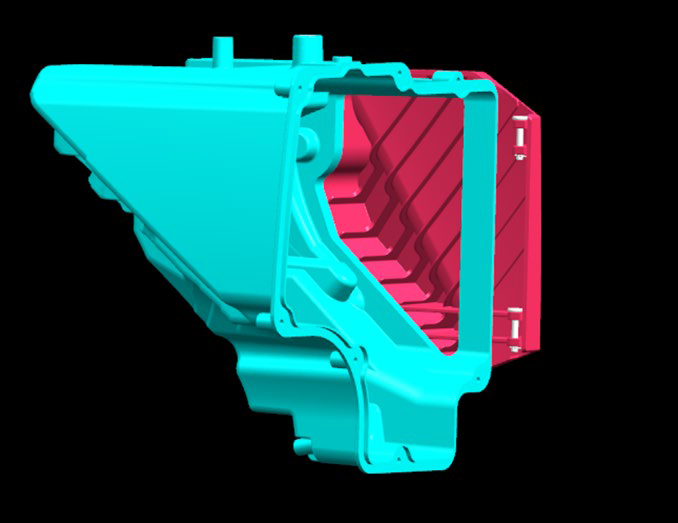
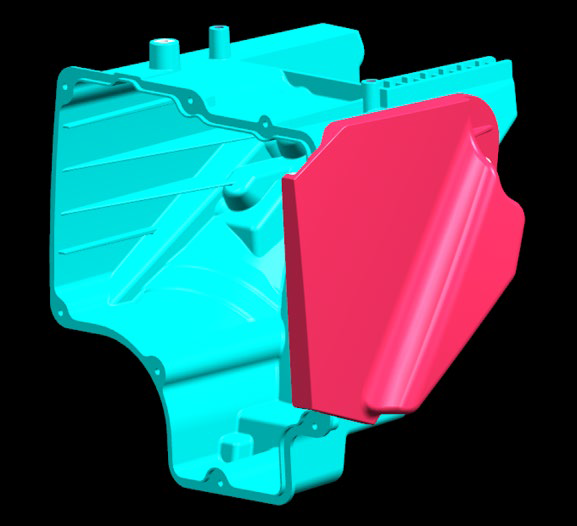
- (2) The muffler has sufficient capacity and a structure with a high sound-silencing effect. By configuring glass wool on the inner wall, we improved damping performance and reduced radiated sound from wall surfaces.

- (3) The clutch cover has reinforcing ribs optimized using CAE which have been incorporated into the inner wall to increase rigidity and reduce noise radiation from the wall surface.

Efforts in Business Activities
Efforts in production
Efforts in reducing emission gas
Control of SOx and NOx emissions
In order to prevent air pollution, we are making efforts to maintain and control sulfur oxide (SOx) and nitrogen oxide (NOx) emissions from boilers, etc. by setting voluntary standards that are stricter than regulation values.
■ SOx emissions*
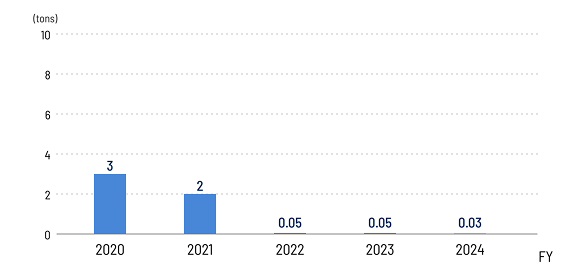
* SOx emissions are calculated based on fuel consumption from January to December.
[Scope of aggregation]
Iwata Plant, Kosai Plant, Osuka Plant, Sagara Plant, Hamamatsu Plant
■ N0x emissions
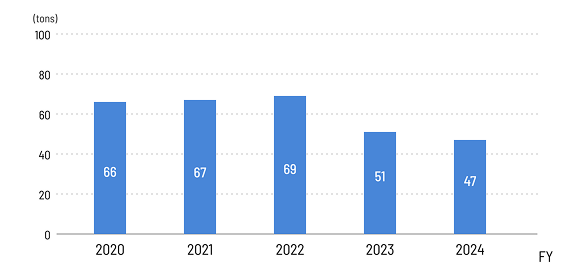
[Scope of aggregation]
Iwata Plant, Kosai Plant, Osuka Plant, Sagara Plant, Hamamatsu Plant
Efforts to reduce chemical substances
VOC reduction in the painting process
We are working to reduce emissions of VOC solvents used in the painting process.
The Suzuki Environmental Plan 2025 targets reducing VOC emissions per painted area by 50% or more compared to FY2000 in the painting process at plants in Japan.
In FY2024, total emissions from painting car bodies, bumpers and motorcycles were 3,993 tons/year, while VOC emissions per production unit were 48.9 g/m2.
A new painting plant will begin operations in Kosai starting in FY2025. Following the lead set by our Sagara Plant, this new painting plant will introduce water-based paints to reduce VOC emissions. Furthermore, we are planning to advance VOC emissions reductions and achieve the goals of the Suzuki Environmental Plan 2025 through, among other efforts, introducing equipment to recover solvent used to clean paint sprayers.
Additionally, we aim to reduce the amount of solvent needed to dilute paint by using thinners with high dissolving capabilities.
■ VOC emissions in the painting process

[Scope of aggregation]
Domestic plants with painting processes for car bodies, motorcycles, and bumpers (Iwata Plant, Kosai Plant, Hamamatsu Plant, and Sagara Plant)
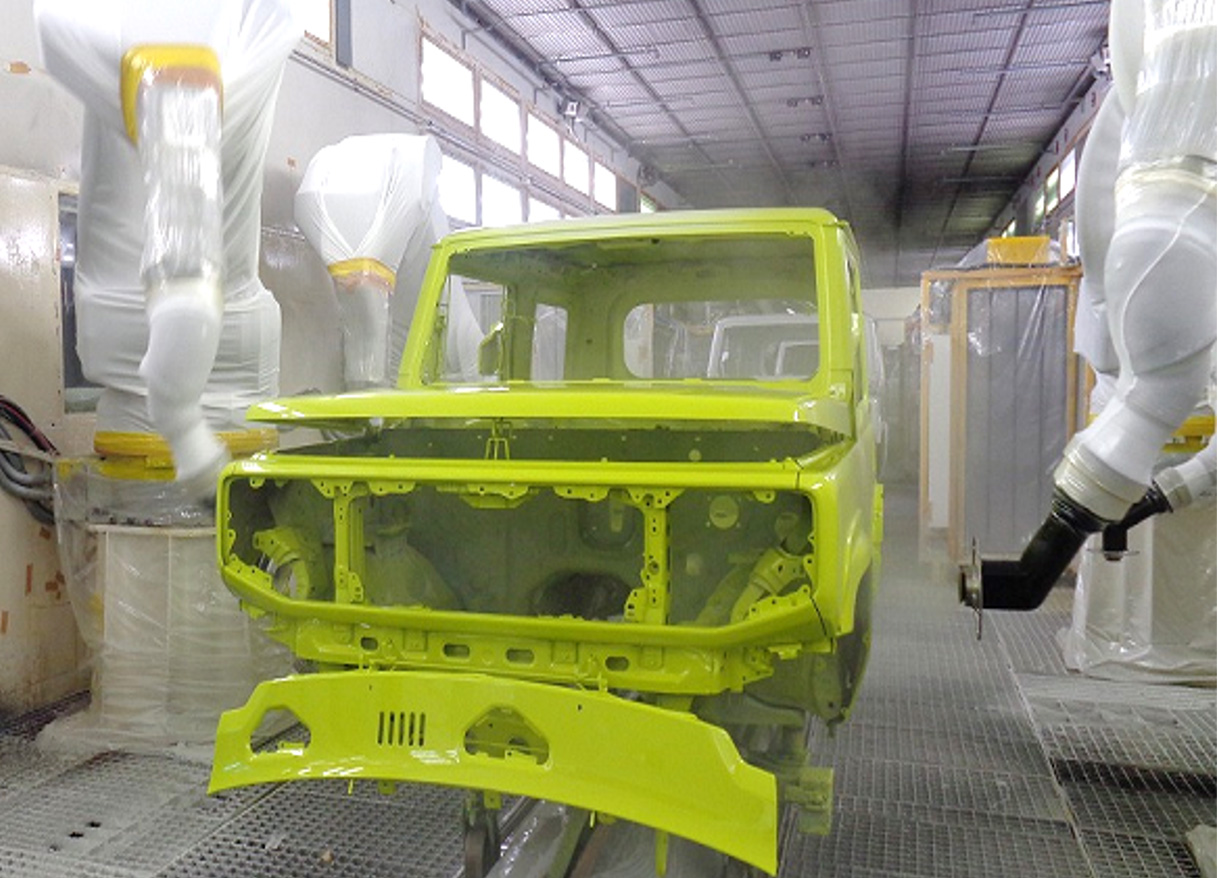
Efforts in reducing odor
Although we strictly follow the relevant regulations and laws, odors and noises may still be unpleasant for local residents. Complying with the laws and regulations that form the basis of sustainability is our bare-minimum responsibility, and we will continue to take measures to address sources of odors and deodorize our factories so that our factories will be trusted by local communities.

 Japan
Japan
